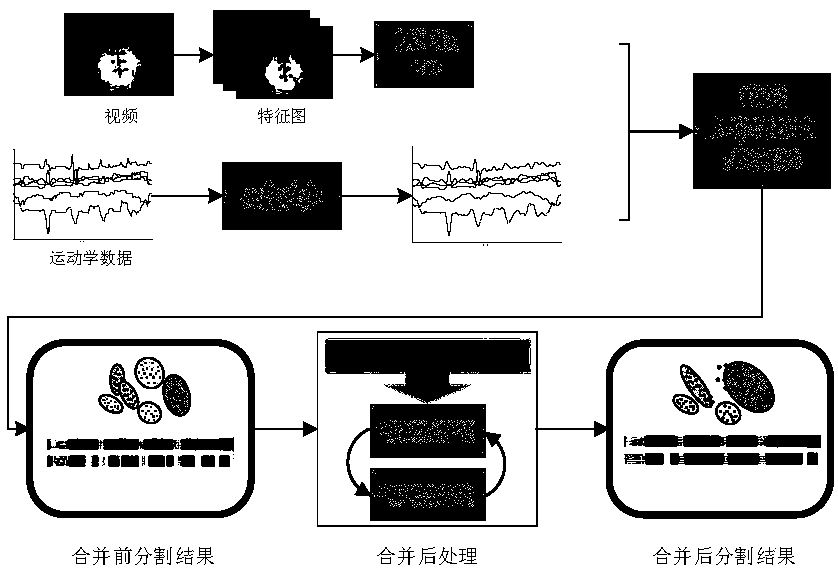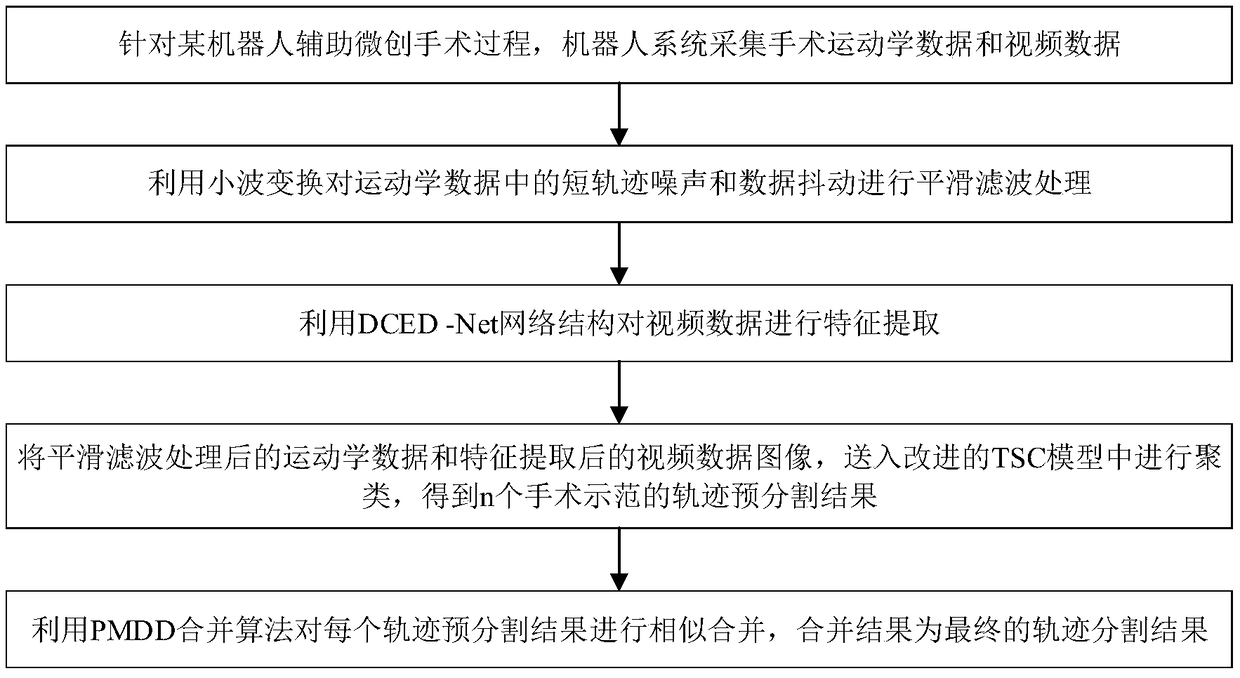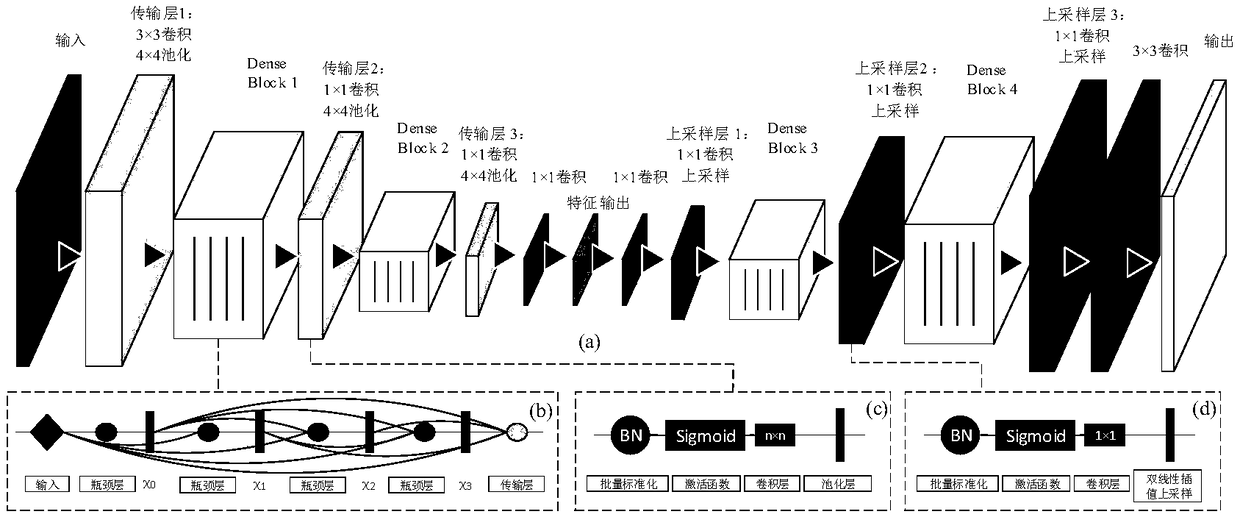A multimodal surgical trajectory fast segmentation method based on unsupervised deep learning
A deep learning, unsupervised technology, applied in image analysis, character and pattern recognition, biological neural network models, etc., can solve problems such as low efficiency of unsupervised methods, excessive segmentation of results, and unremarkable video features
- Summary
- Abstract
- Description
- Claims
- Application Information
AI Technical Summary
Problems solved by technology
Method used
Image
Examples
Embodiment
[0214] The data set used is the JIGSAWS data set published by Johns Hopkins University (Johns Hopkins University), which includes two parts: surgical data and manual annotation. The data set is collected from the da Vinci medical robot system and is divided into kinematic data and video data. The sampling frequency of both kinematic data and video data is 30Hz. The data set contains 3 tasks, needle threading (NP), suturing (SU) and knotting (KT), which are operated and annotated by doctors with different skill levels. In the experiment, it is found that the kinematics data of the data set has a small amount of segment trajectory noise and data jitter, so the kinematics data is smoothed by wavelet transform and then the trajectory is segmented.
[0215] A subset of the JIGSAWS data set is selected for verification, including two tasks of needle threading and suturing. Each surgical task contains 11 groups of demonstrations, from 5 experts (E), 3 intermediate experts (I), and 3...
PUM
 Login to View More
Login to View More Abstract
Description
Claims
Application Information
 Login to View More
Login to View More - R&D
- Intellectual Property
- Life Sciences
- Materials
- Tech Scout
- Unparalleled Data Quality
- Higher Quality Content
- 60% Fewer Hallucinations
Browse by: Latest US Patents, China's latest patents, Technical Efficacy Thesaurus, Application Domain, Technology Topic, Popular Technical Reports.
© 2025 PatSnap. All rights reserved.Legal|Privacy policy|Modern Slavery Act Transparency Statement|Sitemap|About US| Contact US: help@patsnap.com



